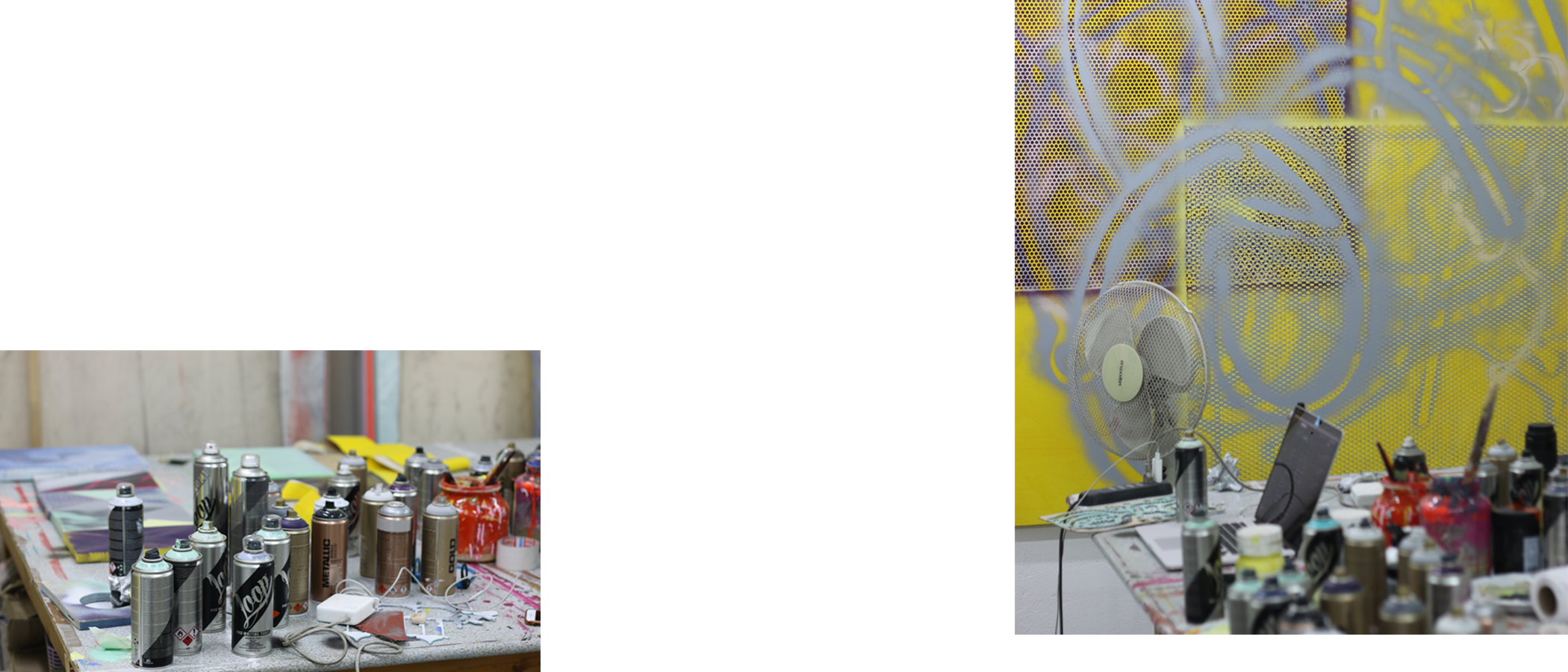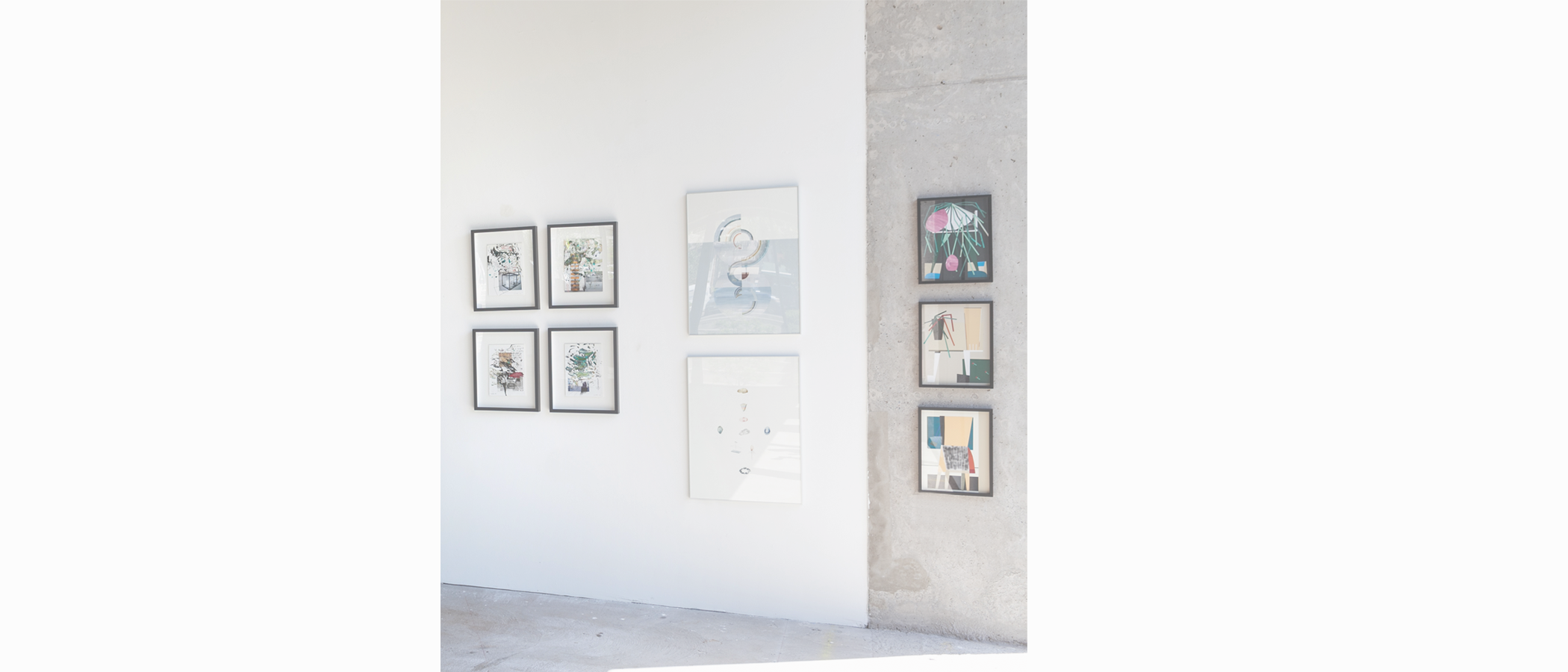
Raimundo Edwards
Tell us a little about yourself and the reason why you decided to dedicate yourself to art.
I was born in Santiago de Chile in 1979, I lived in Brazil from 1984 to 1989 and I am a visual artist with a degree in painting from the Finnis Terrae University and a Master's degree in Visual Arts from the University of Chile.
At some point in my adolescence I understood that art contained languages that opened up the possibility of establishing relationships, ideas and materialities from different logics, from there I pursued the idea of studying and developing myself specifically from the visual arts.
Could you tell us a little about the inspiration that inspired your work, and how it has evolved throughout your career?
My work is inspired by the urban context and the principle of collecting, starting with the observation of the environment and the capture of elements that I translate into different visual and material supports. Painting, photography, video and objects are the representational media used in various displacements that include work with digital images and actions.
In these displacements, the urban is brought into the exhibition space through signs and traces. Always in a pictorial matrix, the collection and composition privilege a tension between the organic and the industrial, where the strategy of the negative and chromatic saturation is repeated.
The development of my work in recent years has been reflected in the idea of defining these observations in a specific language, such as painting for example, and containing or loading these works with the findings and experiences developed in previous research, where the heterogeneous assembly of different media and fragments in an architectural space has been reduced to images loaded with chromatic saturation and a picto-installation system based on a logic of accumulation, repetition and autonomy in each piece.
The image becomes, in the end, autonomous from the material, social and conceptual processes and contexts that produced it. And I am currently in the process of turning each work into an autonomous element, governed by its own rules of reading, conceptuality and visuality.
What is the research process behind your paintings?
Using a technique developed in recent years that consists of fixing the negative image of objects found in the city and matrices of industrial origin by applying spray paint on fabrics of different dimensions, I have created a series of paintings that behave as chromatic containers of accumulation, storage, marking and transfer from the observation of our urban environment and its displacement within each pictorial support.
Stage 1: Collection.
The process consists of determining an area within the city of Santiago to establish routes in search of different discarded materials of industrial origin and then select those that, due to their formal characteristics, have a functional result as "matrices" to be used in the production of pictorial works.
Stage 2: Matrix.
A layer of color is applied on fabrics of different formats and then the work is tested from an indirect “error” (there is no direct hand) on the fabric support by applying spray on the matrix-objects, where the logic of layers becomes an insistent method of finding an image saturated with vaporous, soft, hard, irregular, regular shapes and colors where the masking tape works as an articulator, ties and insists on generating variations.
Stage 3 final: Picto-Installation (Assembly).
Once the canvases are finished, they are stretched on frames and then installed in the exhibition space with logics of serial grouping and continuity, using the walls of the exhibition space in relation to the scale and installation logics of specific mounting locations according to the dimensions and architectural characteristics of the place.
I quote a fragment of the text that Eugenio Dittborn wrote for this series of paintings:
… 1. In paintings by Raimundo Edwards (RE) the horizontal position of the support It has enabled every kind of attack. Transformed into a bunk bed, a stretcher, a bed and a pallet, it makes it possible, by means of a spray of spray, to cover masking tapes and other objects and then uncover them. Marks of all kinds appear, then disappear and reappear. Again and again, others reappear.
2. Partial stumble. Immediately change direction. Thus RE walks around the canvas in search of strokes of luck .
3. Spray in hand the matter becomes more relaxed, more entangled, more tumultuous and more brittle. Additions and erasures collide and collapse. Fields out of focus are traversed by sinuous networks. The spray works from various distances. There will be sharp marks and evanescent marks running away.
…
Fragment of the text for the exhibition Redoing everything at will - Museo MAVI, 2019.
Could you describe your job in three words/concepts?
Collection / Matrix / Chroma (color)
What projects are you currently working on/researching?
I am currently continuing with the series of paintings, while at the same time I am doing some editorial and process work in which public space is used as an immediate context. I have been interested in taking up again this idea of inhabiting a space, a territory and defining its limits in some way, so I have returned to using signage materials and minimal elements such as the line materialized in metal bars covered in reflective tape with the function of tracing urban areas under the scale of the body.
I will also be presenting a work as part of the selection of Cuban curator Omar López-Chahoud at LabVitrina MIAMI online, which opens in October. In the summer of 2021, I will be exhibiting a work at the Museo de Arte Moderno- MAM in Chiloé under the curatorship of Coca González. And I am preparing a project that will be exhibited in Berlin in 2021.
Do you have any contemporary or historical artists who influence your work?
Many, in recent years I could name the following: Eugenio Dittborn, László Moholy Nagy , Andrei Tarkovski, Helio Oiticica, John Baldessari, Sigmar Polke, Richard Tuttle, Matt Mullican, Elsworth Kelly, Francis Alÿs and Gabriel Orozco.


